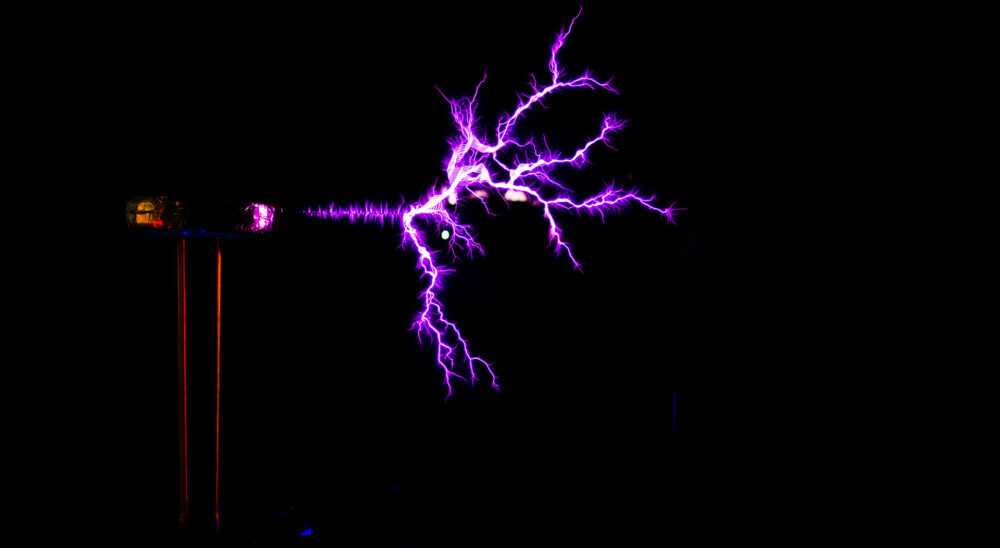Rudi Venter achieved a major milestone in his final-year project. Under supervision of Mr Nelius Bekker, he successfully designed, constructed, and tested a Tesla coil with the ability to produce discharges longer than 1m while being powered from a standard plug point.
What is a Tesla Coil, and What Is It Used For?
A Tesla coil is an electrical resonant transformer circuit that produces high-voltage, low-current, high-frequency alternating-current electricity. It was invented by Nikola Tesla in 1891 and is used for various purposes, such as educational demonstrations, novelty lighting, music, and entertainment.
Tesla coils function based on the principle of electromagnetic induction, utilising two (or sometimes three) coupled resonant electric circuits. They can produce output voltages ranging from 50 kilovolts to several million volts for large coils. Tesla coils were also used for wireless telegraphy, radio transmitters, and early models of televisions.
However, they have now been replaced by modern systems. Sparks produced by Tesla coils continue to be used as spark plugs in vehicles to initiate fuel combustion. They are also used in electrical equipment to prevent the generation of dangerous voltage spikes. Although Tesla had planned to use them for power transmission, this would be somewhat impractical and dangerous.
Realising a Childhood Dream
Bekker commends Rudi as a hardworking, hands-on engineer with a burning passion for introducing people to the world of engineering. This passion drove him to realise his childhood dream of designing and building a Tesla coil, not as a hobbyist but as an electrical engineer. Rudi aims to use the Tesla coil’s wow factor as a gateway to discuss and teach high voltage fundamentals like safety, dielectric breakdown, gas ionisation, capacitive coupling, electromagnetic fields and coupling and resonance.
Going Forward
This Tesla coil will be a great addition to the educational tools at Stellenbosch University’s High Voltage laboratory at the Department of Electrical and Electronic Engineering.





